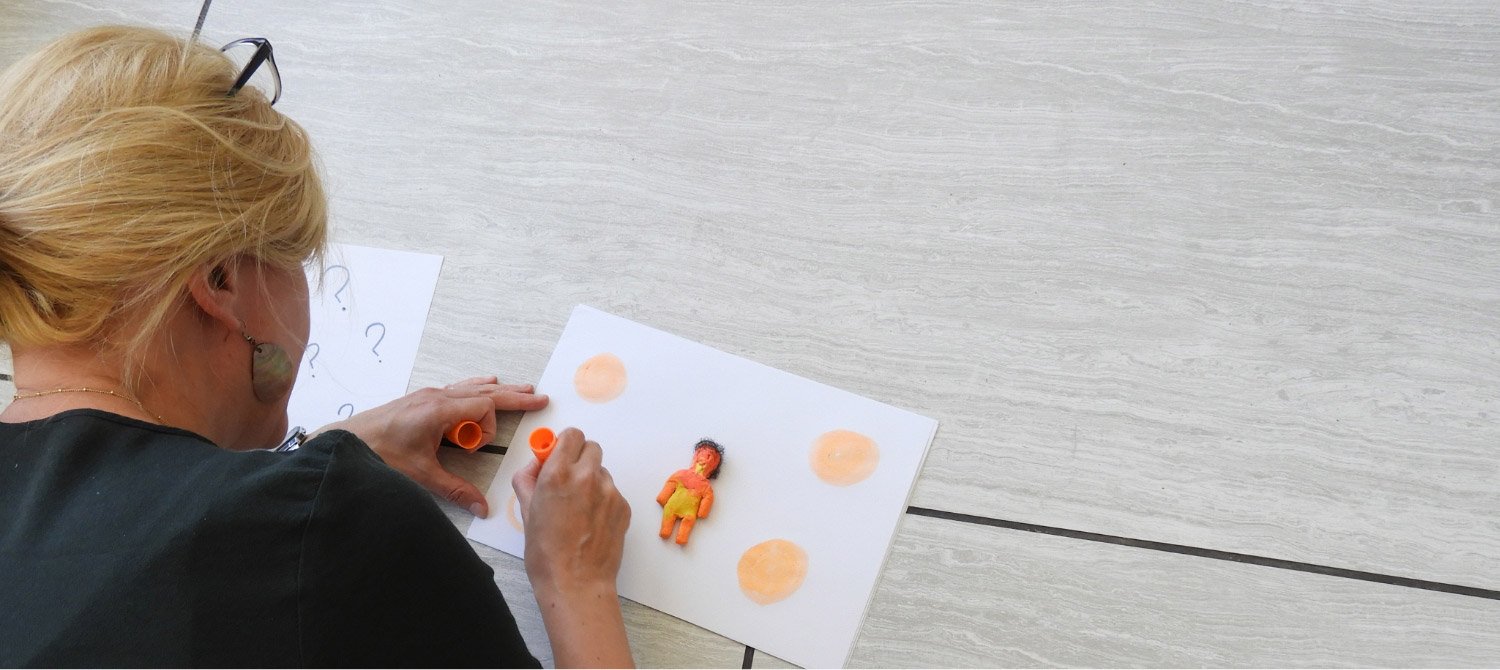
The Power
of Storytelling:
About
What is Storytelling and What Do We Mean by it?
In research and teaching, storytelling can be used for diverse purposes, in different ways, and at varied levels of depth and complexity.
The focus of this guide is an approach that supports storytelling by people about their own lives and experiences.
This approach is called Transformative Storywork. It has been developed over the past 20 years, with over 1,000 storytellers across the world.

This kind of storytelling process involves people:
Choosing a story to share about their experiences
Crafting their story through visuals, written/spoken words, sounds,
music, movement or other forms
Making their story in the format
they choose
Deciding if and how their final story will be shared, and for what purposes
You can find more information on the full Transformative Storywork approach here

Why Is This
Guide Needed?
While there is growing interest in storytelling in many fields, there is relatively little practical and ethically informed guidance available about how to facilitate storytelling processes.
This guide provides resources to help develop appropriate storytelling approaches. It includes examples of practical exercises, questions to consider, and examples of different uses of storytelling for different purposes.
This guide aims to make storytelling more accessible as a way of conducting research and as a technique for contributing to greater inclusion in research, learning, and impact.
It is a place to start to think through some of the key questions and considerations for how to use storytelling in an ethical and effective way.

What is the guide not for?
It is not a step-by-step guide for how to do storytelling, and it does not replace the in-depth training that is required to do storytelling well. Rather, it is intended to inspire interest in and reflection around how storytelling could enrich your research or teaching.
Storytelling about life experiences is a complex process, and there are many ethical, technical, and artistic considerations. Working with storytelling in an in-depth way requires considerable skill and resources, which will be different across contexts. These cannot be acquired by reading this (or any) guide. We do hope, however, that it encourages you to explore storytelling techniques in your teaching or research.
Who is it for?
This guide is for students, researchers, teachers, and other practitioners who want to engage with and learn from stories about other people’s experiences.
It has been written for people who want to incorporate elements of storytelling into their work but are wondering where to start.

“I feel transformed too – like something inside me has really shifted in terms of this story. And part of that is seeing my story in relation to everyone else’s. “
Storytelling workshop participant, UK.

We Are
This guide has been written by Joanna Wheeler and Alison Buckler, with contributions from the Ibali team.
Joanna and Alison are co-founders of Ibali, a storytelling network launched in 2018 by a team of researchers from the UK, South Africa, Sweden, Kenya, and Nigeria. Between 2021 and 2024, Ibali focused on using storytelling to understand inclusion and exclusion in education across geographical contexts.
Funded by the UK Arts and Humanities Research Council (AHRC), a team of four researchers and four ethnographers worked with young people, teachers, teacher educators, and policymakers in Nigeria, South Africa, and the UK. This guide has been funded through this project, and many of the examples are from this work, but we also draw on other storytelling initiatives from the past 20 years. Read more here.
To cite this guide:
Wheeler, J. and Buckler, A. 2024. Transformative Storywork: An online guide to storytelling for researchers, educators and practitioners.
transformativestory.net










